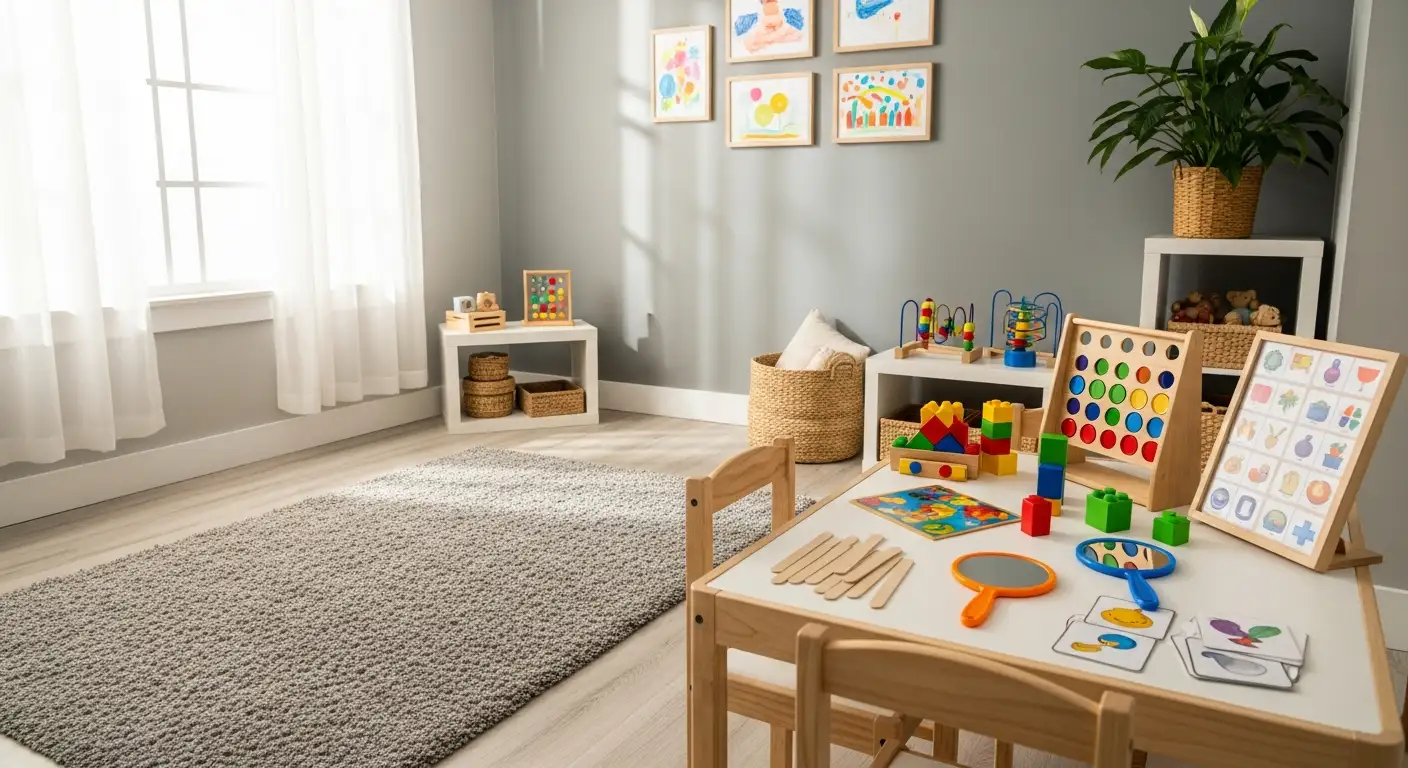Empowering Social Connections Through Evidence-Based Strategies
Autism Spectrum Disorder (ASD) presents unique challenges in social communication and interaction, often making the building of friendships a complex task. However, Applied Behavior Analysis (ABA) therapy offers effective, research-backed techniques to support children with autism in developing social skills vital for forming and maintaining friendships. This article explores how ABA therapy leverages structured methods and positive reinforcement to nurture social abilities, address challenges, and promote inclusive environments where children with autism can thrive socially.
Understanding the Role of ABA Therapy in Social Skills Development
How does ABA therapy support social skills development in children with autism?
ABA therapy plays a significant role in enhancing social skills in children with autism. It teaches children fundamental social norms like greetings, turn-taking, and sharing through structured repetition and positive reinforcement. These strategies help children understand what is socially appropriate and encourage them to practice these behaviors.
Effective ABA techniques include social skills training and pivotal response treatment, which focus on improving responsiveness to social cues and fostering reciprocal interactions. By reinforcing desired behaviors, ABA motivates children to engage more confidently in social activities.
Additionally, ABA emphasizes developing communication skills, both verbal and nonverbal. This includes teaching children how to initiate conversations, make eye contact, and interpret nonverbal cues like facial expressions and body language.
Recognizing emotions and understanding different perspectives are also central goals. Through visual aids, social stories, and role-playing activities, children learn to identify emotions in themselves and others, which is vital for cultivating empathy and forming friendships.
Structured play and group activities provide real-life or simulated environments where children can practice new skills with feedback and support. These experiences help children transfer learned behaviors to everyday settings.
Support from parents is crucial. Practicing social skills during routines and encouraging social opportunities at home and in the community helps reinforce what children learn during therapy.
In sum, ABA therapy supports children with autism by teaching foundational social skills, developing communication and emotional understanding, which together promote more meaningful and lasting friendships.
| Social Skills Taught | Techniques Used | Goals |
|---|---|---|
| Greetings and sharing | Repetition, positive reinforcement | Confidence in initiating interactions |
| Turn-taking and conversation skills | Social stories, modeling | Improved social reciprocity |
| Recognizing emotions | Visual aids, emotion cards | Empathy and emotional understanding |
| Perspective-taking | Role-playing, video modeling | Enhanced social awareness |
Structured social activities and inclusive environments further support friendship development, helping children with autism practice these skills in safe, supportive spaces.
Core Techniques in ABA for Fostering Friendships
ABA (Applied Behavior Analysis) therapy employs several effective methods to help children with autism develop social skills and build friendships. Central among these are positive reinforcement, role-playing, social stories, and video modeling.
Positive reinforcement involves providing rewards or praise when a child demonstrates desired social behaviors like sharing, asking questions, or greeting peers. This encouragement motivates children to practice and refine their social interactions in a positive environment.
Role-playing exercises, social stories, and video modeling serve as practical tools within ABA to teach social norms and cues. Through role-playing, children practice initiating conversations or taking turns in a controlled setting. Social stories and visual scripts help children understand social situations and appropriate responses by illustrating expected behaviors step-by-step. Video modeling allows children to observe and imitate successful social interactions, reinforcing learning through visual cues.
To ensure these strategies are effective and tailored, behavior analysts conduct functional behavior assessments. These assessments help determine the purpose behind specific social behaviors and guide the development of individualized strategies. The tailored plans focus on teaching skills in ways that generalize to real-world situations, empowering children to apply what they learn in everyday social settings.
In sum, ABA’s combination of positive reinforcement, role-playing, social stories, video modeling, and personalized assessments creates a comprehensive approach. This multimodal strategy helps children with autism develop communication skills, recognize social cues, and form meaningful friendships, ultimately fostering greater social inclusion and emotional well-being.
Addressing Social Challenges and Sensory Sensitivities
Children with autism often face difficulties in recognizing and responding to social cues. They might struggle with understanding when to take turns during conversations or interpreting facial expressions and gestures. This can lead to misunderstandings and reduce opportunities for meaningful social interactions.
Sensory sensitivities also play a significant role in social challenges. Many autistic children are hypersensitive or hyposensitive to sensory stimuli such as loud noises, bright lights, or certain textures. These sensitivities can cause discomfort or overwhelm during social activities, making it harder for them to participate comfortably.
Behavioral challenges linked to sensory processing, such as meltdowns or withdrawal, can further hinder friendship-building. For example, a child overwhelmed by sensory input may avoid social settings altogether, limiting chances to practice social skills.
Empathy and emotional understanding are essential for forming connections. Children with autism might find it difficult to interpret others' emotions or perspective-take, which are crucial for developing empathy. As a result, they may struggle to respond appropriately to peers' feelings, affecting the depth of their friendships.
Strategies like visual supports, social stories, and role-playing are vital tools in addressing these issues. These methods help children recognize emotional cues and understand social expectations in a predictable way.
Creating sensory-friendly environments is also important. This might include lower lighting, quieter spaces, and sensory breaks, enabling children to engage more comfortably in social activities. Promoting awareness among peers and caregivers helps foster understanding and patience.
Ultimately, integrating targeted interventions such as ABA therapy can help children with autism develop skills in social communication, cope with sensory sensitivities, and build meaningful relationships. Supporting their emotional growth ensures they can participate more fully in social life and cultivate friendships that boost confidence and well-being.
How does ABA therapy support social skills development in children with autism?
ABA therapy supports social skills development in children with autism by teaching them essential social rules and behaviors through structured interventions. Utilizing principles of operant conditioning, ABA employs positive reinforcement to encourage desired social interactions and communication skills. Techniques such as Social Skills Training and Pivotal Response Treatment are designed to improve attention, response to social cues, and reciprocal interaction with others. Over time, these targeted skills can increase a child's self-confidence and willingness to engage in social settings, fostering greater integration and community participation. Additionally, ethical standards in ABA ensure culturally competent and individualized approaches, maximizing social development outcomes for each child.
Utilizing Structured Activities to Practice Social Skills
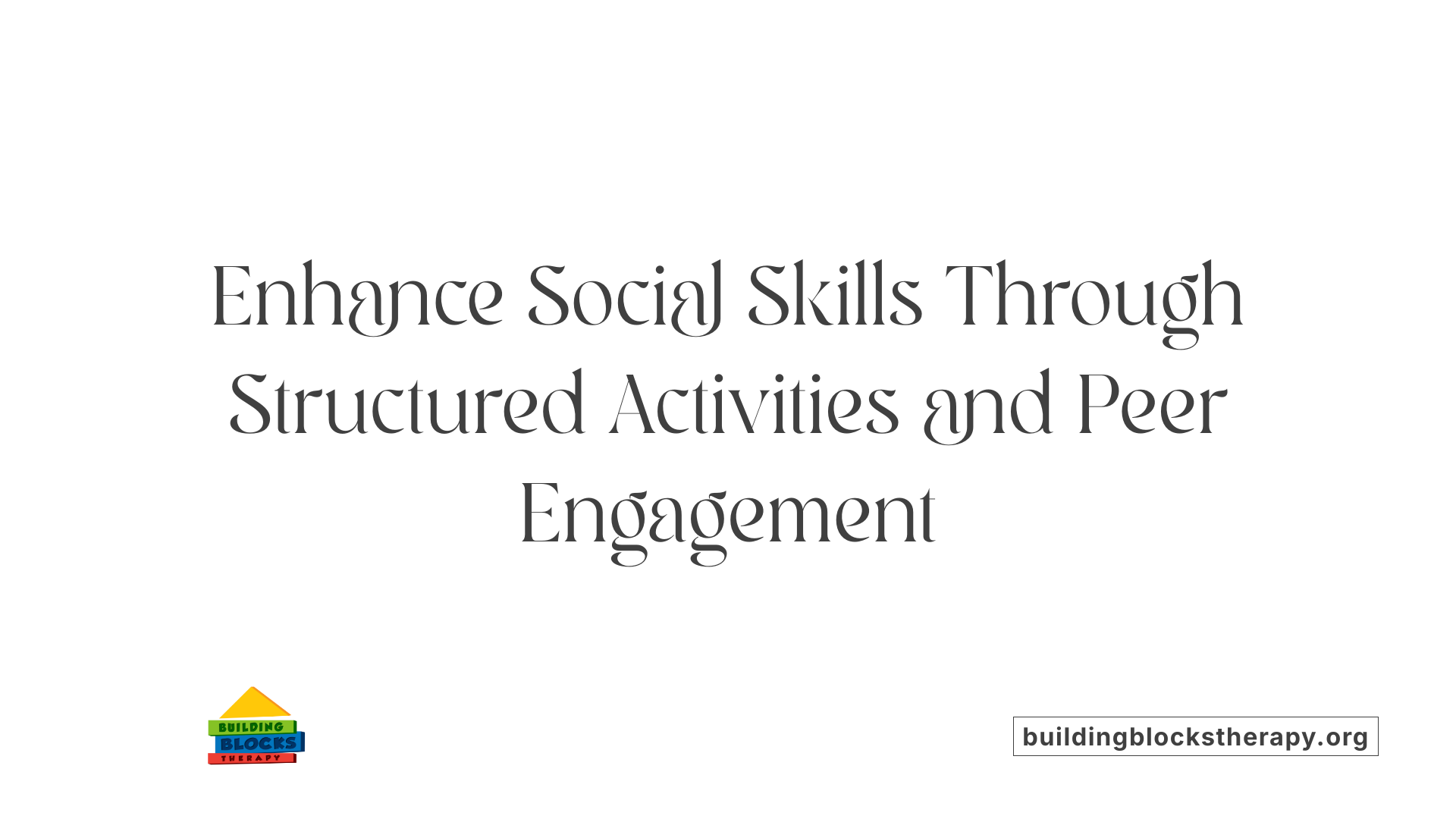
How can parents help children with autism develop friendships?
Parents play an essential role in supporting their child's social development and friendship-building skills. One effective way is encouraging participation in activities that align with the child's interests, providing natural opportunities for social interaction. For example, joining clubs or community groups that focus on hobbies such as music, art, or sports can connect children with peers who share similar passions.
Scheduling playdates in familiar, sensory-friendly environments can also foster meaningful interactions. These carefully arranged meetings help children practice social skills in a safe and comfortable setting. Using structured tools like social skills games, emotion dice, or role-playing strategies allows children to learn and recognize facial expressions, social cues, and conversational behaviors.
At home, parents can incorporate activities like turn-taking games and pretend play, which serve as practical practice for social skills. These activities help children understand social norms and develop confidence in engaging with others.
Collaborating with educators and therapists to include social goals within the child's Individualized Education Program (IEP) ensures a professional and targeted approach to social development. Participating in parent-led support groups offers an additional layer of support and shared resources. Overall, a combination of structured play, social opportunities, and professional guidance creates an encouraging environment for children with autism to establish and maintain friendships.
| Activity Type | Description | Benefits |
|---|---|---|
| Social stories and role-playing | Use visual stories and simulated scenarios to teach social interactions | Improves understanding of social cues and appropriate responses |
| Structured play and group activities | Organized activities that promote turn-taking and sharing | Builds foundational social skills and peer relationships |
| Emotional regulation exercises | Techniques like emotion dice and feelings cards to recognize and manage emotions | Enhances empathy and conflict resolution capabilities |
This integrated approach nurtures social skills, helping children with autism develop meaningful and lasting friendships.
Building Empathy and Emotional Understanding
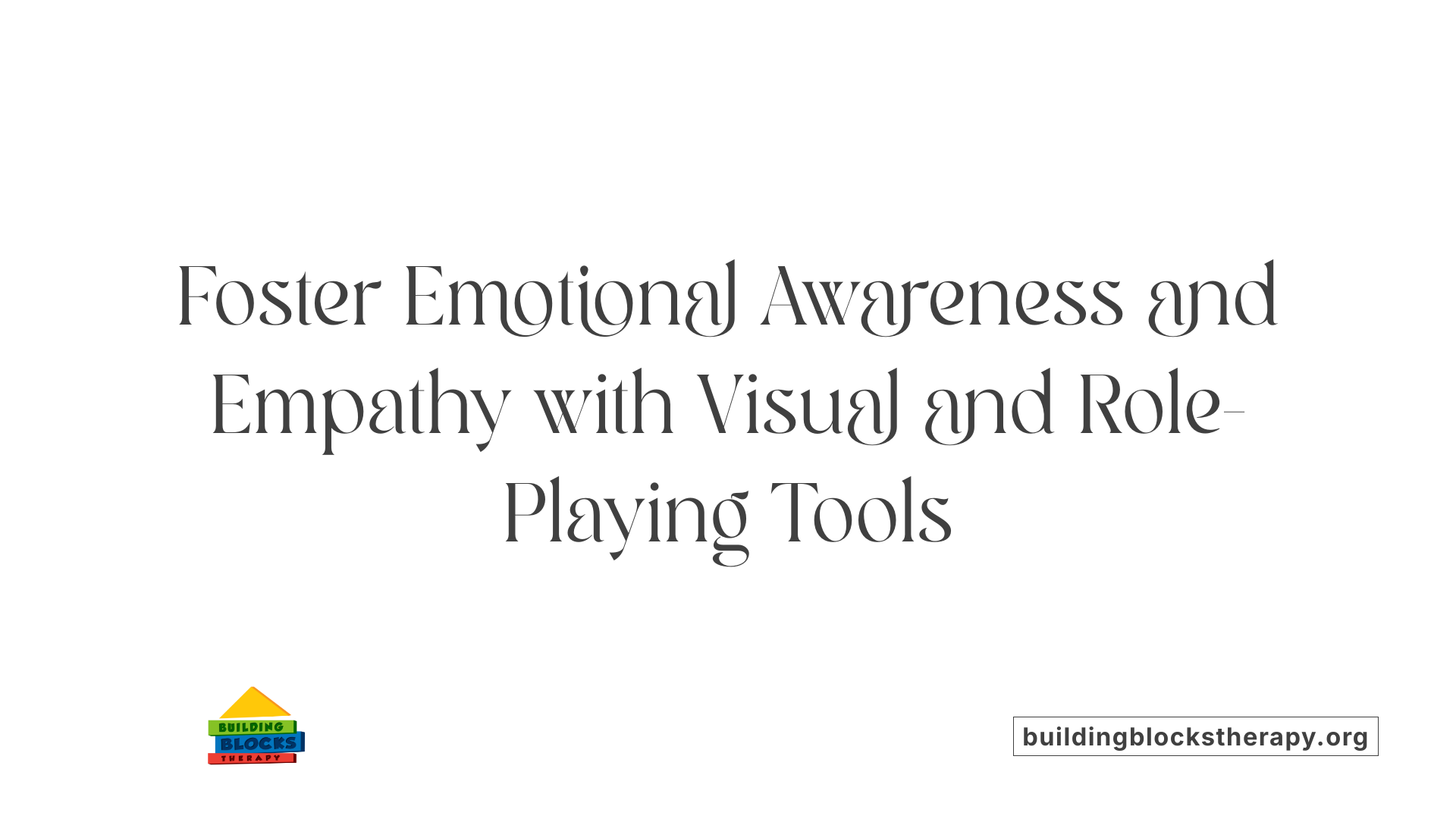
Visual aids, social stories, and emotion cards
Using visual supports like emotion cards, social stories, and visual aids helps children with autism recognize and understand emotions more effectively. These tools provide clear, concrete representations of feelings and social situations, making it easier for children to grasp complex social cues. For example, emotion cards showing happy, sad, angry, or surprised faces can be used to teach children to identify and name emotions.
Social stories describe typical social interactions and appropriate responses, helping children understand what to expect and how to behave. They can be customized to address specific situations, such as sharing toys, taking turns, or initiating conversations. These visual and narrative supports often make learning social skills more engaging and accessible.
Fostering empathy and perspective-taking
Developing empathy and the ability to see others' perspectives is vital for forming friendships. Activities like role-playing and guided discussions encourage children to consider how others might feel in various scenarios. Role-playing helps children practice responding empathetically and understanding different viewpoints.
Focusing on shared interests and common experiences also promotes connection. For example, engaging in activities that mirror a child's hobbies allows them to relate better to peers, making interactions more natural.
Promoting emotional regulation and conflict resolution
Teaching children to regulate emotions helps prevent and resolve conflicts, which are common barriers to friendship. Techniques such as recognizing personal emotional signs, calming strategies (like deep breathing), and conflict resolution skills equip children to handle disagreements calmly.
Incorporating social stories that depict conflict situations and appropriate responses enables children to learn constructive ways to manage their feelings and interactions. Combining these methods with positive reinforcement encourages consistent use of emotional regulation strategies.
How does ABA therapy support these skills?
ABA therapy employs structured activities like role-playing, social stories, and video modeling to teach social and emotional skills. Visual supports reinforce learning, while behavioral techniques like positive reinforcement motivate children to practice new interactions. Consistent practice in a safe setting helps children incorporate these skills into everyday life.
Through targeted strategies, ABA therapy helps children with autism better understand others’ emotions, develop empathy, and regulate their own feelings—cornerstones for building lasting friendships.
Promoting Inclusive Environments and Peer Support
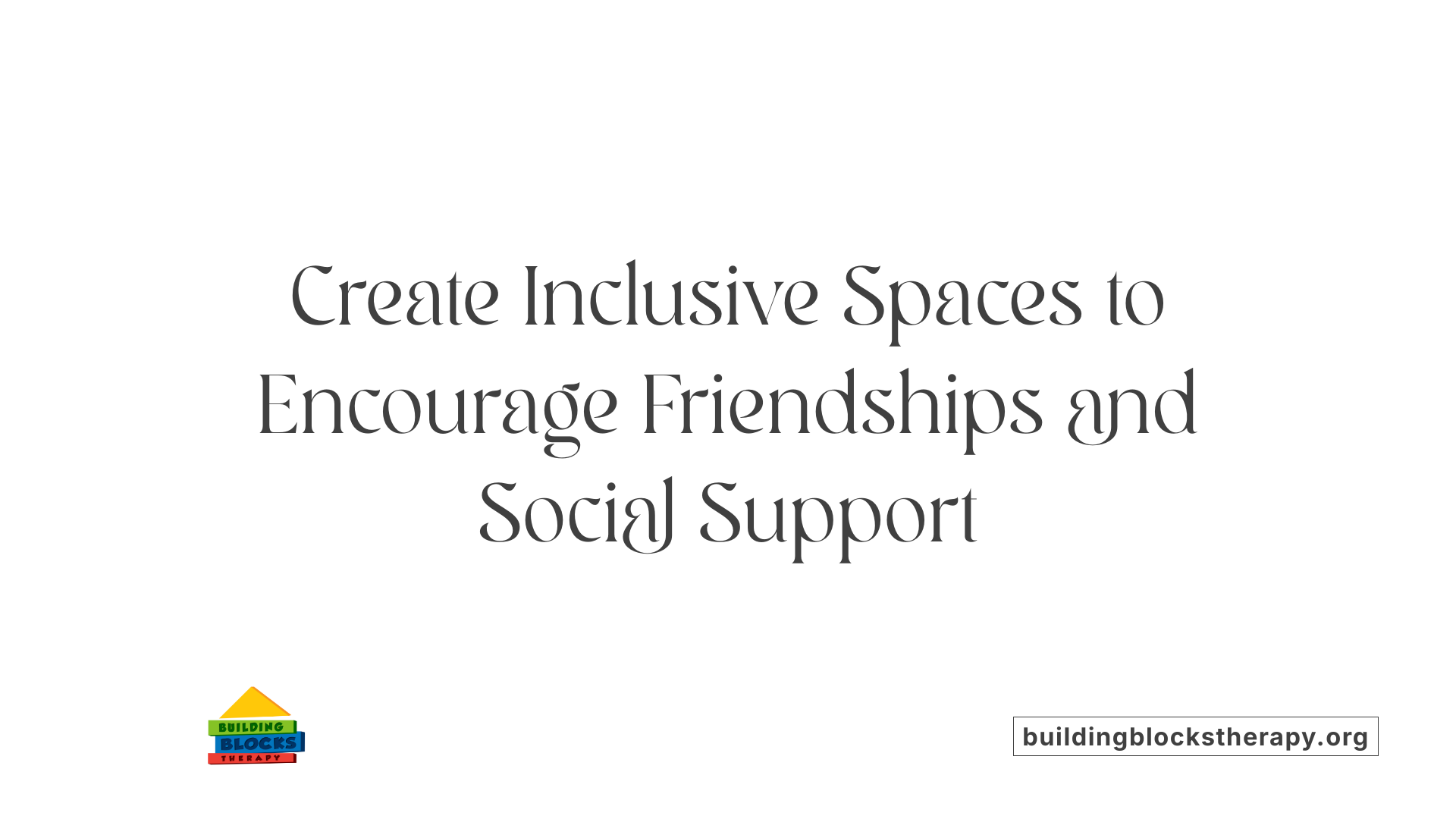
How can parents help children with autism develop friendships?
Parents play a vital role in nurturing social connections for children with autism. Encouraging participation in activities the child enjoys naturally creates opportunities for social interactions, making friendships more likely to flourish. Scheduling playdates with peers who share similar interests—whether through school programs, community events, or hobby groups—helps children build meaningful relationships in familiar, comfortable settings.
Utilizing structured tools like social skills games, emotion dice, or role-playing exercises can teach children to recognize facial cues, understand emotions, and respond appropriately, all in a safe and supportive environment. Creating social opportunities at home, such as turn-taking games or pretend play, further develops essential social skills that can translate into real-world friendships.
Collaborating with educators and therapists is equally important. Incorporating social goals into Individualized Education Programs (IEPs) and participating in parent support groups can provide additional resources, guidance, and structured environments for friendship building. Consistent practice, patience, and positive reinforcement help children with autism develop confidence and social competence, fostering lasting friendships.
Summary and Future Directions in Friendship Building for Children with Autism
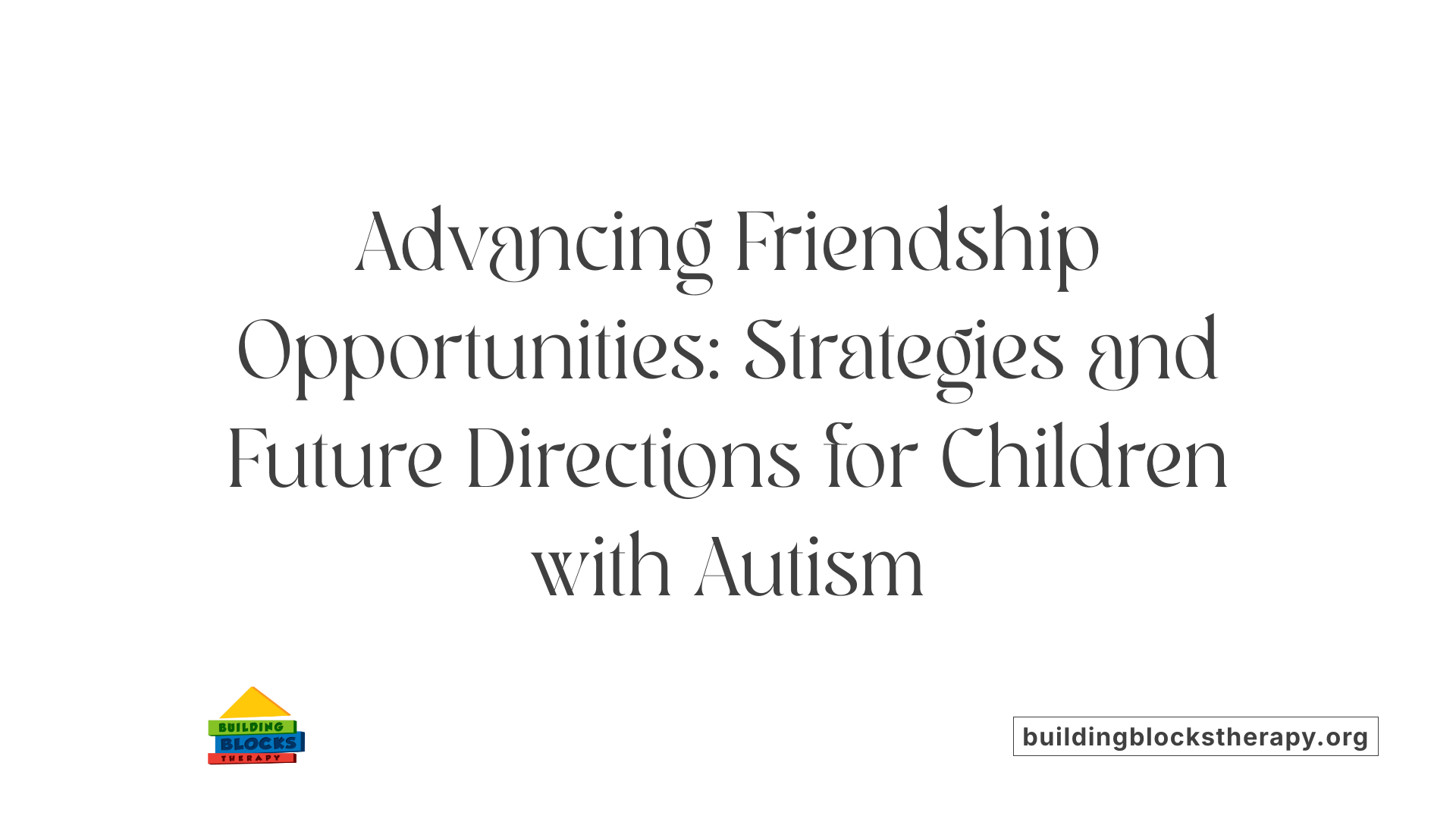
Why Are Social Challenges Significant for Children with Autism?
Autism spectrum disorder often presents obstacles to forming and maintaining friendships. Difficulties like trouble interpreting social cues, understanding nonverbal communication, and managing sensory sensitivities can make peer interactions challenging. Children may struggle with giving appropriate responses, taking perspectives, or sharing interests, which are all vital for friendship.
How Can Targeted Strategies Enhance Friendship Development?
Implementing specific approaches helps children overcome social hurdles. Structured activities such as role-playing, social stories, and visual supports teach essential social skills like turn-taking, sharing, and initiating conversations.
Using positive reinforcement motivates children to practice desired behaviors, while activities that foster shared interests provide common ground for interaction. Promoting empathy through activities like perspective-taking and emotion recognition improves emotional understanding, which is crucial for deepening friendships.
Supporting emotional regulation and sensory-friendly environments further enable children to manage feelings and sensitivities during social exchanges. Modeling appropriate behaviors and encouraging peer buddy programs cultivate supportive relationships.
How Do Inclusive Communities Foster Friendships?
Creating inclusive settings—like autism-friendly events, schools with social skills programs, and parent-led groups—offers safe opportunities for social growth. Arranging playdates in familiar, sensory-friendly environments allows children to interact without feeling overwhelmed.
Educating peers about autism and teaching communication tools like social scripts empower children to advocate for themselves and express needs. Regular practice of friendship skills, supplemented with technology and parent involvement, helps sustain and strengthen relationships.
Looking Ahead in Friendship Development for Children with Autism
Future research and community efforts aim to refine interventions, making them more accessible and tailored to individual needs. Emphasizing inclusive environments, expanding peer support networks, and leveraging technology are promising directions.
Enhancing training for caregivers and educators, alongside incorporating the voices of children with autism, will further improve friendship opportunities. Overall, understanding social challenges and applying targeted strategies in supportive communities are essential for helping children with autism build meaningful, lasting friendships.
Fostering Friendship and Social Inclusion
In summary, ABA therapy plays a pivotal role in equipping children with autism with the social skills necessary to forge positive and lasting friendships. Through structured teaching, positive reinforcement, and inclusive activities, ABA addresses core social challenges while promoting empathy, communication, and emotional understanding. By collaborating with families and educators, and creating supportive environments, children with autism can discover meaningful social connections that enhance their confidence and independence. As awareness and understanding continue to grow, fostering inclusive communities will become increasingly feasible, paving the way for more children with autism to experience the joy and support of genuine friendships.
References
- Social Skills in ABA Therapy: Helping Your Child Build Friendships
- Autism and Friendships: Supporting Social Growth | Blossom ABA
- Fostering Friendships in Kids with Autism | ABA Therapy Near Me
- Autism and Friendships: Building Social Connections - Move Up ABA
- Autism and Friendships: Building Connections - All Star ABA
- Applied Behavior Analysis (ABA) | Autism Speaks
- Applied Behavioral Analysis (ABA) - Autism Speaks






